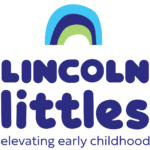Little Details
Elevating Early Childhood to even the playing field.
Little Details
- 42% of Lincoln families with children under age 6 live in poverty* or near poverty
- 3,665 children under age 5 in Lincoln live in families that fall below the poverty*
threshold - 78% of Lincoln’s children under 6 have all parents in the workforce
- Lincoln parents at all income levels report expense as the biggest challenge to accessing
high-quality care - In Lincoln, the average cost of childcare ($10,000-$14,500 per year) is more than the
average cost of resident tuition for a year of public college ($8,978) (most recent 2017 data) - Most children under 5 who live in families below the poverty* threshold live with single
moms (54%), followed by married couples (36%), and single dads (10%) - Lincoln Littles funding can support working families with a portion of tuition if they earn
under 80% Area Median Income (AMI).
Frequently Asked Questions
Why is quality early childhood education important?
Creating equal opportunities for all children to learn and grow in their early years – regardless of race, gender or socioeconomic background – is vital to Lincoln’s prosperity. Access to high quality early childhood experiences enables children to be kindergarten-ready and to develop into successful community citizens. In Lincoln, 78% of children live in households where all parents are in the workforce. High-quality child care helps children to develop the range of skills necessary for future life success. Conversely, low-quality early environments can lead to deficits in children’s development.
What is the cost of child care?
Child care is very expensive. In fact, Nebraska is one of the least affordable states in the U.S. for child care. The annual cost of $12,480 for family child care for an infant would take up almost 15% of income for a median income two parent family. Nebraska ranks least affordable in the nation for a range of child care types.
How can Lincoln parents access affordable quality child care?
Providers of quality care have openings to provide child care for families who are in low-income situations. Parents may receive help to pay for child care for infants, toddlers and preschoolers from two main sources:
• Child Care Subsidy through the Department of Health and Human Services
• Tuition assistance programs through individual child care providers
Unfortunately, many families fall in the gap between qualifying for Child Care Subsidy and being able to afford to pay for high quality early childhood care. Tuition assistance through Lincoln Littles Early Learning Fund will help fill this gap. Working parents are often forced to make the difficult decision of accepting a raise and losing all of their child care subsidy or keeping their lower wage job so they can keep their child in a quality setting.
What is child care subsidy and who can access it?
The child care subsidy program helps low-income Nebraskans work, find a job or pursue education by subsidizing the cost of child care. Currently, initial eligibility of the program is limited to those at or below 130% of the federal poverty level (FPL), which is at or below 37% state median income. Note that Nebraska’s program eligibility was set much higher in the past. Families must renew their eligibility every 12 months.
How will the funds be distributed?
The Lincoln Littles Early Learning Fund created through this initiative will be granted to eligible early childhood providers who are on Step 2 or higher on Nebraska’s Step Up to Quality rating system and are committed to accepting lower-income families. After the giving day, a selection committee with members representing Lincoln Littles, Lincoln Community Foundation and Nebraska Children and Families Foundation will approve awards to providers for tuition assistance to ensure more of Lincoln’s infants, toddlers and preschoolers facing the greatest odds may attend quality early childhood programs. Providers will determine how many children they will serve and what tuition assistance is needed for these children.
What is our goal?
Our aspirational goal is to reach $1M, but our dream is to surpass that goal. We know from Give to Lincoln Day that this city is very generous. The more we raise, the more infants, toddlers and preschoolers we can serve.
Why are for-profit providers allowed to receive grant funding?
Currently, there are more than 750 children on the wait list for preschool classes through Lincoln Public Schools, and this does not include infants and toddlers. If we were only to support nonprofit and school-based programs, we would be limited in our ability to increase the capacity to serve the children who need it most. Lincoln does not have enough space in nonprofit or school-based programs alone. Quality for-profit and home-based providers are vital to this initiative. Lincoln Littles will build capacity and quality with everyone’s help.
